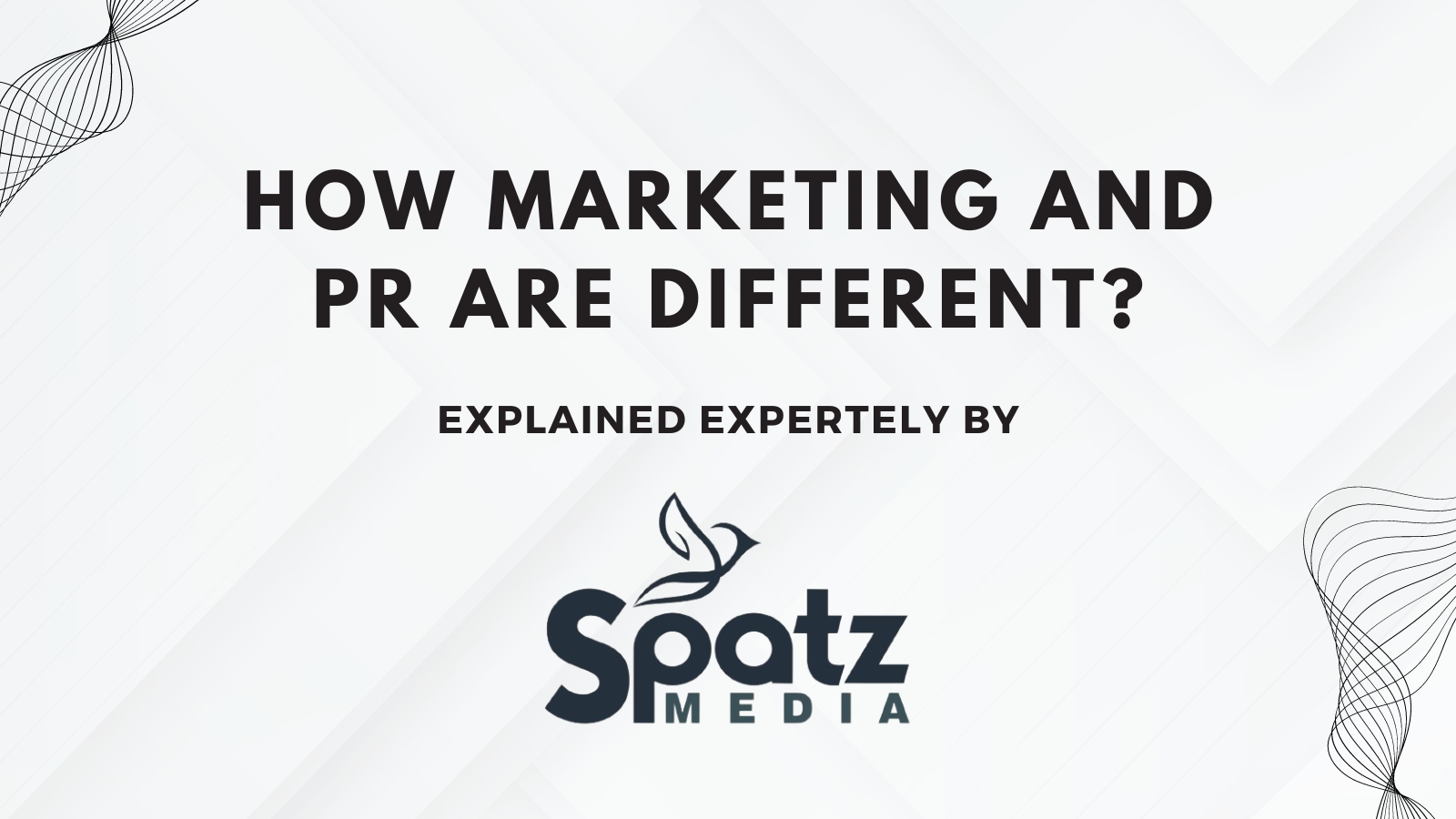
Spatz Media
In today’s competitive business landscape, understanding the nuances between Marketing and Public Relations (PR) is essential for crafting effective communication strategies that resonate with target audiences. While both disciplines share the common goal of enhancing brand visibility and reputation, they employ distinct approaches and serve different purposes in achieving these objectives from Spatz Media.
The Role of Marketing
Marketing revolves around promoting products or services directly to consumers with the aim of driving sales and revenue. It encompasses a wide range of activities such as advertising, market research, product development, pricing strategies, and distribution channels. The primary focus of marketing is to create demand, generate leads, and convert prospects into customers through targeted campaigns and strategic messaging. It relies heavily on market analysis and consumer behavior insights to optimize engagement and maximize return on investment (ROI).
Understanding Public Relations (PR)
On the other hand, PR is more about managing the overall public perception and reputation of a brand or organization. Unlike marketing’s direct promotional approach, PR aims to build meaningful relationships with stakeholders, including the media, customers, employees, investors, and the broader community. PR professionals work to shape a positive public image through strategic communication efforts that emphasize credibility, trustworthiness, and authenticity. This often involves media relations, crisis management, community engagement, event planning, and internal communications aimed at fostering goodwill and enhancing brand reputation over the long term.
Differentiating Between PR and Marketing
To illustrate the differences, imagine a new product launch by a tech company. The marketing team would focus on creating compelling advertisements, optimizing digital campaigns, and leveraging social media platforms to drive product sales. Their goal is to highlight the features and benefits of the product and convince consumers to make a purchase.
Conversely, the PR team would take a different approach. They would aim to secure positive media coverage in relevant tech publications, arrange interviews with industry experts, and position the company’s executives as thought leaders in the technology sector. Their objective is to build credibility, enhance brand reputation, and cultivate trust among key stakeholders. PR professionals understand the importance of storytelling and use narratives to create meaningful connections between the brand and its audience, beyond just selling a product.
Conversations with Spatz Media
Client: Hi Spatz Media! I often hear about PR and marketing. Aren’t they the same thing?
Spatz Media: Great question! While they share some common goals, they’re distinct. PR is about building relationships and managing your reputation, while marketing is more focused on promoting products or services.
Client: So, PR is more about the brand and relationships?
Spatz Media: Exactly! PR shapes public perception and trust. It’s about the bigger picture—how your brand is seen by the public.
Client: And marketing?
Spatz Media: Marketing is more product-centric. It involves activities to promote and sell products or services directly.
Client: Got it! So, PR is about reputation, and marketing is about selling.
Spatz Media: You nailed it! PR is the storyteller, while marketing is the salesperson.
Client: That makes sense. Thanks for clarifying!
Spatz Media: My pleasure!
These conversations with Spatz Media illustrate how PR goes beyond traditional marketing tactics by focusing on relationship-building, reputation management, and strategic storytelling. By understanding these distinctions, businesses can leverage both marketing and PR effectively to achieve their overarching business goals and establish a strong presence in the marketplace.





